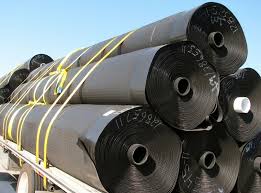Introduction
Efficient water management is crucial for successful farming. One effective way to achieve this is by using farm dam liners. These liners not only help in conserving water but also prevent contamination and seepage. In this post, we’ll delve into the benefits of farm dam liners, their types, and best practices for installation.
Benefits of Farm Dam Liners
- Water Conservation: Farm dam liners minimize water loss due to seepage, ensuring that every drop of water is utilized efficiently. This is especially beneficial in arid regions where water conservation is paramount.
- Preventing Contamination: Liners act as a barrier to prevent pollutants from entering the water supply. This is crucial for maintaining the quality of water used for irrigation and livestock.
- Cost-Effective: Although the initial investment might seem high, farm dam liners save money in the long run by reducing the need for constant water refilling and minimizing soil erosion.
- Durability: High-quality liners are resistant to UV rays, punctures, and chemical degradation, ensuring a long lifespan and reducing the need for frequent replacements.
Types of Farm Dam Liners
- Geomembranes: These are the most common type of liners, known for their strength and flexibility. They come in various materials like HDPE (High-Density Polyethylene), LLDPE (Linear Low-Density Polyethylene), and PVC (Polyvinyl Chloride).
- Geosynthetic Clay Liners (GCLs): Made from a layer of natural clay (usually bentonite) sandwiched between geotextiles, GCLs are highly effective in preventing seepage and are often used in conjunction with geomembranes.
- Reinforced Polyethylene Liners (RPE): RPE liners are known for their high puncture resistance and durability, making them suitable for larger farm dams.
Installation Best Practices
- Site Preparation: Ensure the dam site is clear of sharp objects and debris that could puncture the liner. The area should be smooth and compacted.
- Choosing the Right Liner: Select a liner based on the specific requirements of your farm dam, considering factors like size, water type, and environmental conditions.
- Proper Seaming: Seams are the most vulnerable part of any liner installation. Ensure that seams are welded or bonded correctly to prevent leaks.
- Protection from UV Exposure: While many liners are UV resistant, it’s still a good practice to cover the liner with soil or rocks to prolong its lifespan.
- Regular Maintenance: Regularly inspect the liner for any signs of wear and tear, and repair any damage promptly to maintain its effectiveness.
Where to Buy Farm Dam Liners
For those looking to invest in high-quality farm dam liners, consider checking out reputable suppliers such as:
These suppliers offer a wide range of options to suit various farm dam needs.
Conclusion
Investing in a farm dam liner is a wise decision for any farmer looking to optimize water usage and ensure the longevity of their water reservoirs. By understanding the benefits, types, and installation best practices, you can make an informed choice that will benefit your farm for years to come.
For more detailed information and expert advice, visit The Dam Liner Blog and stay updated on the latest trends and innovations in dam liners.
By optimizing your farm dam with the right liner, you’re not only conserving a vital resource but also enhancing the sustainability and productivity of your agricultural operations.
Originally posted 2024-07-31 17:05:00.

